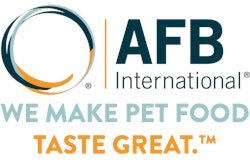
Hill’s Pet Nutrition plans to build a 23,000-square-foot facility largely devoted to conducting feeding trials with small dogs, reported the Topeka Capital-Journal. The Shawnee County Commission approved construction of the research building at Hill’s existing property in Topeka, Kansas.
Construction may begin in July or August. Once completed, the feeding trial facility will house 80 dogs of 20 pounds or less. Feeding trials will address the flavor, shape and size of foods that small dogs prefer.
Small dogs prefer large kibble in palatability tests
Contrary to human logic, small dogs may prefer large-sized kibble, reported Petfood Industry. AFB International scientists found in palatability trials that every body size of dogs preferred large kibble over small and medium sized pieces. Kristopher Figge, senior technical sales and service representative for AFB International, found the results of these experiment on dogs’ kibble size preferences just as surprising as his audience during his presentation at Petfood Forum 2018.
An innovative aspect of this research on kibble is that it really looked at what small dogs prefer, not what people think they prefer, Figge said. By discerning what size kibble that dogs actually choose, there could be several benefits for both pet food retailers and dog food brands.
Since small and medium sized dogs both preferred the larger kibble, dog food manufacturers could reduce the number of SKUs they produce, he said. Likewise, retailers wouldn’t have to carry as many kibble-size varieties, which would open up shelf space for more brands. More dog food brands could then attract a wider customer base.
Understanding the biological reasons why dogs preferred larger kibble could lead to breakthroughs in dog food palatability, Figge said. His experiment revealed that it may not be the size of the larger kibble, but instead the texture and smell of those dog food pieces that enticed dogs of all sizes.
Experiment observing dog food kibble size preferences
Figge developed the idea for this kibble-size research serendipitously. One day, he gave his small family dog a kibble variety meant for larger dogs. He observed that the dog, which weighed less than 30 pounds, readily devoured the large pieces and seemed to enjoy it.
This surprised Figge, so he decided to test the observation empirically. His research team originally hypothesized that smaller dogs would prefer smaller kibble. Dog foods marketed for small breed tend to have relatively smaller kibble sizes than standard varieties, but it seems humans may have just assumed this was what little dogs would prefer.
In the experiment, a standard formulation was extruded in three different sizes. Small kibble ranged from seven to eight millimeters, medium from 11 to 12 millimeters and large from 15 to 16 millimeters. The 40 dogs in the palatability trial also ranged in size with small dogs being less that 30 pounds, mid-size dogs from 30 pounds to 54 pounds, and big dogs weighing 54 pounds and up.
Analysis of kibble chemical and physical properties
The kibble pieces were evaluated for texture, aroma and taste. The larger kibble pieces proved to have the highest texture scores on the various probe instruments used by the AFB International researchers. Previous studies found evidence that dogs tend to prefer hard diets to soft diets and that texture influences palatability.
Figge’s team used electronic noses and tongues to evaluate how dogs would perceive the kibbles’ taste and smell. While these sensors can’t determine good versus bad flavors or smells, the devices can detect differences. The large kibble proved to be different from the small and medium sizes, while those two sizes varied little from each other.
The researchers used other devices to measure the volatile chemicals emanating from the three kibble sizes. Uncoated large kibble had 23 percent more parts per billion of total volatile molecules than small kibble and 13 percent more than medium kibble. Coated large kibble released the highest levels of volatile flavor compounds. What this means is that large kibble released more aromas that attract dogs to their food.
Considering the importance of smell in a dog’s diet preferences, AFB Internationals’ researchers may have revealed that dogs’ noses trump their mouth sizes when selecting foods. Pet food manufacturers may be able to apply this research to their new product development, Figge said. However, it will fall to the marketing department to convince customers that their Chihuahua can enjoy Great Dane sized kibble.

















